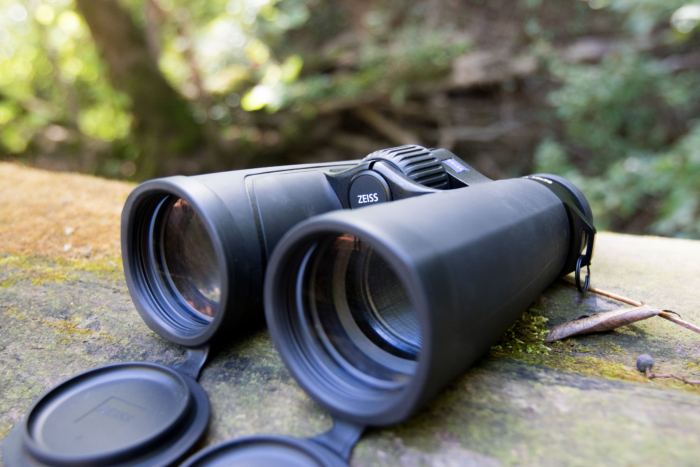I felt hot, sweaty, and dejected as my buddy and I sat in my raft, silently drifting downriver in the bright sun with prime hunting hours coming to a close. We had taken a long shot during Tennessee’s early wood duck and teal season, opting to hunt an out-of-the-way river with complex logistics and few birds in lieu of the crowded WMAs with limited blinds. Despite our best efforts and a three a.m. wakeup, we hadn’t laid eyes on a single duck.
While contemplating why exactly I do what I do, movement in the water downstream caught my attention. I pulled the ZEISS SFL 10X50 binoculars up to my face, and frustration turned to hope. A stunning drake wood duck was swimming along, making its way to some lay-downs on the river’s edge.
We hatched a plan to sneak up, anchor the boat, and send the dog in to flush him out of the timber. It almost worked.
Despite the failed execution, from that point on, we began to see birds, and the hunt turned into a scouting mission. As I was glassing and excitedly pointing out duck after duck, my buddy said, “Let me see those things.” With one look, he paused and said, “Damn. These are nice!”
In short: After using the ZEISS SFL 10X50 binoculars for the last month and a half, I agree with my buddy’s assessment. They are a damned nice piece of gear. I’ve fallen in love with the 50mm objective lens, due to its low-light performance, and the compact size of these binos makes it feel like I’m carrying my time-tested 10X42s. With truly phenomenal optical performance, the SFLs are priced accordingly at $1,800. That puts them at the lower end of premium binos, delivering excellent value.
If you’re looking for a set of binoculars for the hunting season, check out our Best Hunting Binoculars Buyer’s Guide.
-
Size and weight (fits in standard bino harnesses) -
Low light performance -
Excellent clarity -
Sensitive focus wheel -
Eyecups highly adjustable -
Price to quality
-
Provided case -
Lens covers -
Price
Size of the ZEISS SFL 10×50 Binoculars
For hunters, the benefits of a binocular with a 50mm objective lens are apparent, as improved light gathering is vital in those low-light situations when game is most active. But for many, the added bulk and weight aren’t worth it.
That is, until now. With a magnesium construction, thinner lenses, and minimized spacing between lenses, the SFLs are some of the most compact 50mm binos out there. The real testament to that is their ability to fit in some of my more compact binocular harnesses, like the Badlands Bino XR Pro.
Check out the table below to see how the SFL stacks against other 50mm options in relation to size, and how ridiculously close they are in size to the 42mm Swarovskis.
Binocular Size Comparison Chart
| Binocular | Weight | Length x Width |
|---|---|---|
| ZEISS SFL 10X50 | 30.8 oz. | 160 mm x 133 mm |
| Swarovski NL Pure 10X42 | 29.6 oz. | 158 mm x 131 mm |
| Swarovski NL Pure 10X52 | 36 oz. | 175 mm x 132 mm |
| Leupold BX-5 Santiam HD 10X50 | 31.5 oz. | 172 mm x 155 mm |
| Vortex Razor HD 10X50 | 28.1 oz. | 173 mm x 130 mm |
When it comes to Swaro, the SFL is clearly a much lighter binocular. As far as Vortex and Leupold go, the SFLs aren’t all that much lighter — in fact, they’re heavier than the Razor — but the tubes are drastically shorter.
While 13 mm may not seem significant, it is make or break on some of my bino harnesses. With a 160mm length, the SFLs fit in all of them, but some have barely enough room to accommodate them. If they were even 5mm longer, I’d have to get a different bino harness.
The SFL 10X50 brings the light-gathering benefits of a 50mm objective lens, in a package the size of a 10X42. The compact size makes for a great feel in the hand.
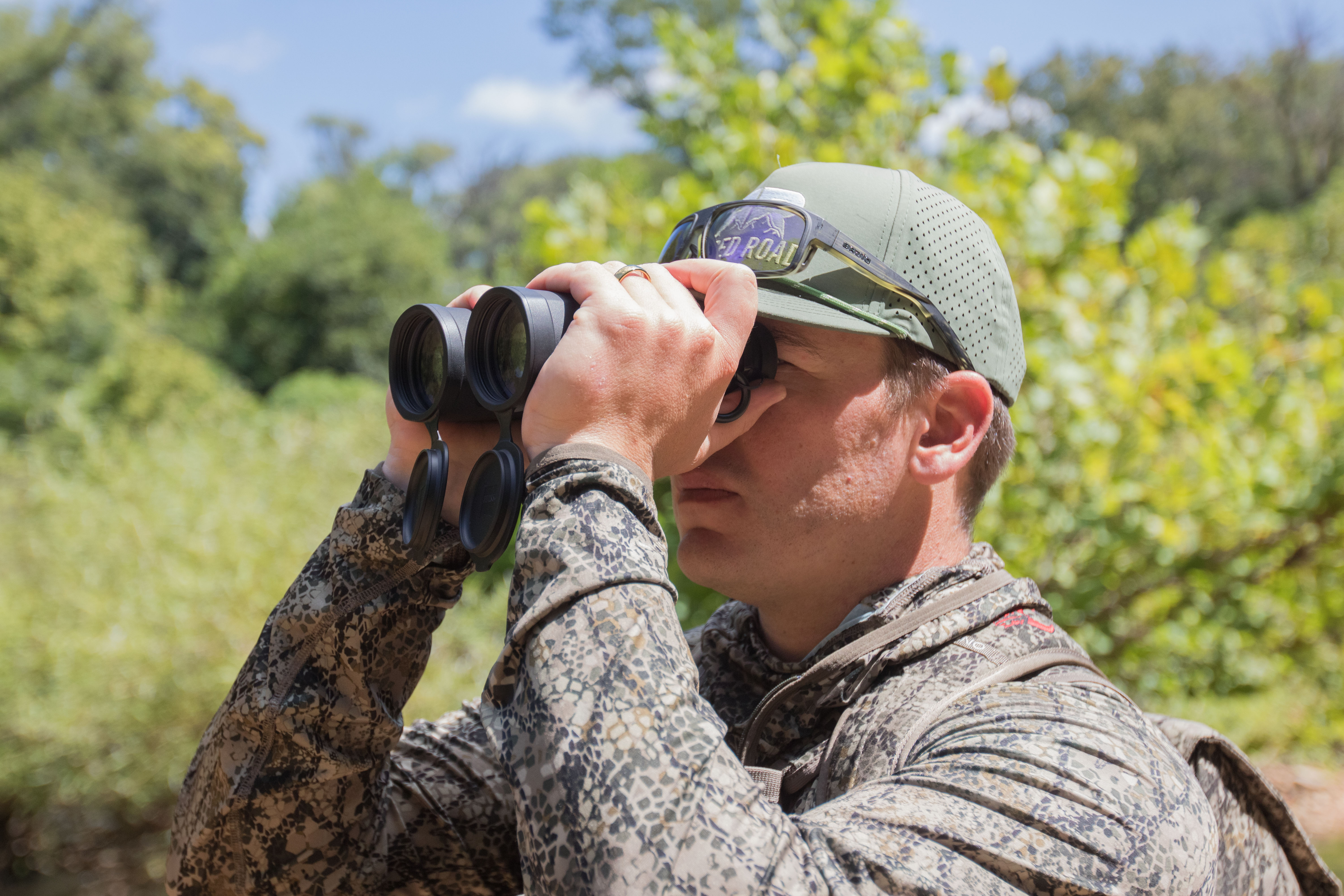
Low-Light Performance of the ZEISS SFL 10X50
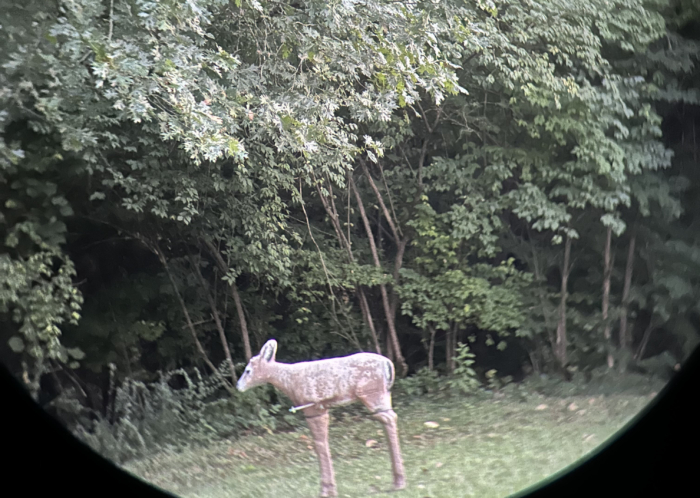
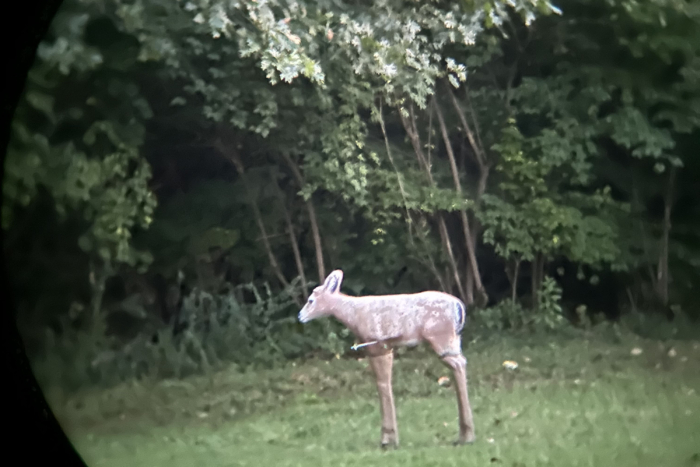
One of the more difficult things hunters face is glassing animals in thick cover in pre-dawn and post-sunset light levels. The view through binoculars darkens up, and things that once clearly stood out as brown plants start to become deer. Or maybe a stump. The lack of light makes naturally colored objects blend together.
While glassing with the 10X50 SFLs next to multiple 10X42s, it was abundantly evident that the larger objective lens was putting out a brighter image, and I was able to discern objects much more quickly. At last light, if a particular deer-like object at a half a mile was questionable in my 10X42s, it was easily identified with the 10X50 SFLs.
The SFLs buy me more glassing time in extreme low-light situations, and for that, they have a permanent spot in my bino harness.
I also love the low-light performance when shooting on my backyard 3D archery range. I try to shoot every day, but sometimes I don’t get to it until the last 10 minutes of light. When it’s almost completely dark, I can still faintly make out the core of my targets, which isn’t the case with my 10X42s.
I’d like to point out that the photos above were taken with an iPhone held up to the lens. The result is images that are not reflective of the clarity of either the 10X50 SFLs or the Vortex 10X42s. Both look much clearer in person with minimal distortion. But they illustrate the difference in light gathering. Those differences were even more drastic when it was basically dark outside, but there wasn’t enough light for the camera to work correctly.
Optical Clarity
For the price, you should expect the SFLs to deliver premium optical clarity, and they do. There is virtually no distortion on the edges of the image. It’s crystal clear from edge to edge.
From the tiny details on the head of that drake wood duck, to being able to count the tines on velvet buck, the SFL 10X50s deliver an image that looks like you’re viewing something from Nat Geo.
I have yet to notice any noticeable amount of chromatic aberration, regardless of the light conditions. On top of that, they perform great in situations with maximum glare.
There are many bright-light situations I’ve been in (like looking at ducks on the water in high sun) that resulted in glare in many of my binoculars. Glare from bright light is virtually nonexistent with the SFLs. I even tried shifting my face around to get glare to show up. Nada. They’re a joy to use in any lighting condition.
You couldn’t ask for much more in terms of optical clarity than what the ZEISS SFL 10X50 provides. I don’t see room for any real-world, easily noticeable improvement.
Eyecup Adjustability
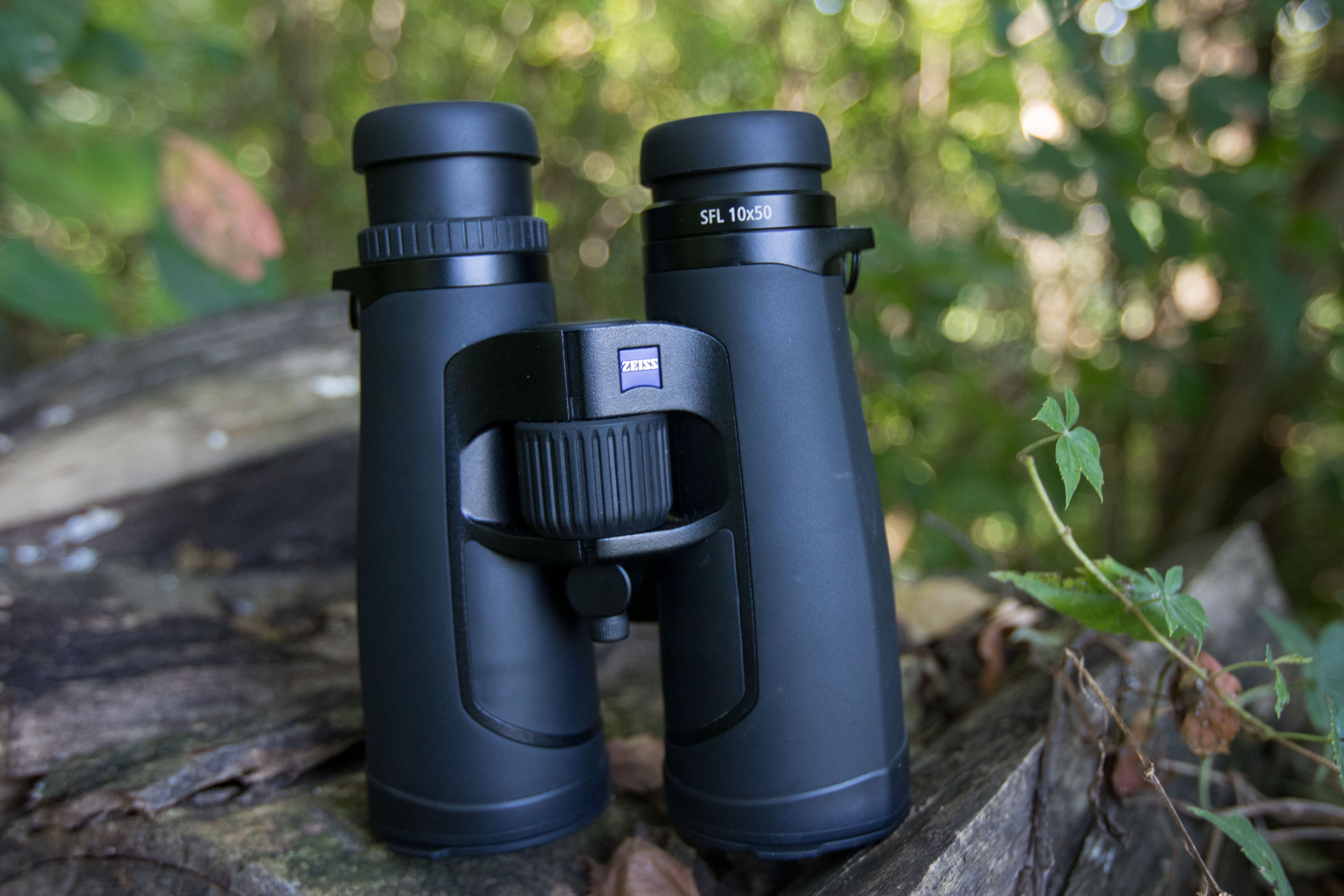
Another standout feature of the ZEISS SFL is the four different positions the eyecups can be placed in. Most binoculars give you two options: completely in for eyeglass wearers, or completely out for everyone else.
Having both those options, and two more in between, allows you to dial in the perfect fit for your face. I found the second from the furthest out works best for me. I wish more brands were doing this with eyecups.
Once you max out the eyecups, you can continue twisting to pull them off entirely, allowing you to access the entire lens for cleaning.
Focus Wheel of the ZEISS SFL 10X50

When I first put the SFLs to my face, I went to focus them and was met with immediate shock. The focus wheel was touchy. I mean, real touchy.
In just 1.4 total turns of the knob, the SFL’s focus ranges from its close focus distance of 5.9 feet to infinity. This results in a small movement of the knob, adjusting the focus drastically.
At first, that gave me the ick.
But, within 10 minutes, I became accustomed to it. Within a few days, I fell in love with it. It is so nice being able to adjust the focus with the slightest move of my fingertip. Now, when I go back to my other binoculars, I feel like I’m wasting time trying to get a clear image. It allows me to really fine-tune the focus as well, and get it absolutely perfect.
Other Fun Specs, Compared
When comparing specs to other popular 10X50 binoculars on the market, the SFL really stands out as one of the best out there. Here are some of the more noteworthy ones.
Field of View at 1,000 Yards
The SFL has a FOV of 366 feet, while the similarly priced Vortex Razor HD has a FOV of 315 feet, and the significantly less costly Leupold BX-5 Santiam HD has a FOV of 304 feet. You can flat out see more ground with the ZEISS SFL.
The only binocular I compared that beats out the ZEISS is the Swarovski NL Pure, with a FOV of 390 feet. But those binoculars are a whopping $2K more expensive.
Close-Distance Focus
While not important to hunters, nature lovers trying to view close-up butterflies, flowers, and in rare cases close-up birds, should pay attention to the close focus distance. It’s the nearest distance at which the image can be crystal clear. Here, the ZEISS SFL is an outright winner.
- ZEISS SFL: 5.9 feet
- Swarovski NL Pure: 10.8 feet
- Vortex Razor HD: 10 feet
- Leupold BX-5 Santiam HD: 11.4 feet
Warranty
The warranty on the ZEISS SFL seems to be fair, although it is laced with the typical legal jargon. Basically, the binoculars are covered against defects and workmanship for the life of the product. Whatever that means. To me, that leaves a lot of room for interpretation on ZEISS’s part. You can read the entire thing here.
The SFLs do not qualify for the 5-year accidental coverage policy. The binos don’t have the best warranty, but they don’t have the worst. Read Hunt/Fish Editor Rachelle Schrute’s guide to binocular warranties to see how it stacks up to the competition.
Where the ZEISS SFL 10×50 Misses
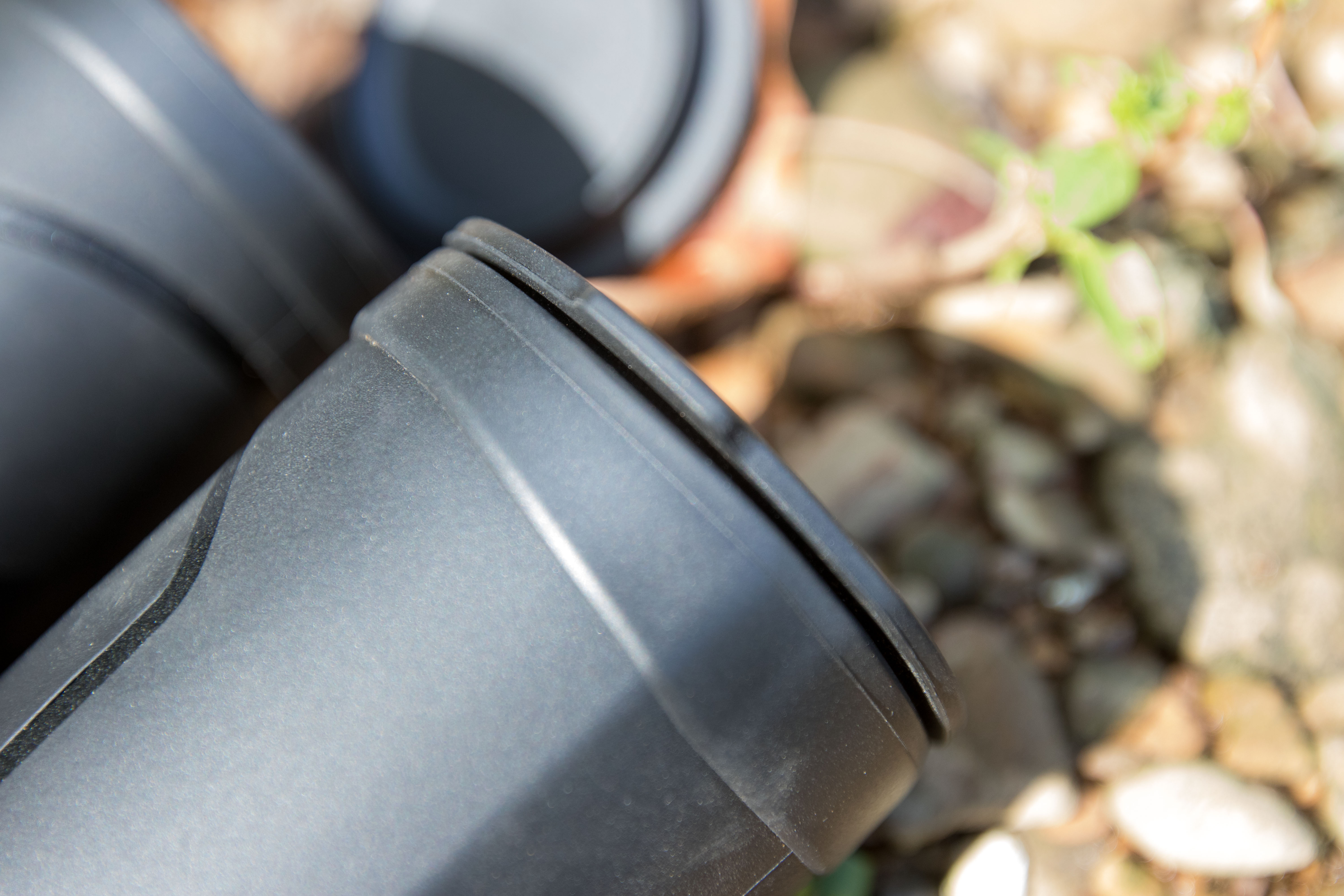
It’s rare for me not to find anything to complain about when testing a product. But as far as the performance of the SFL binoculars themselves goes, I’ve got nothing.
I said I didn’t like the touchy focus wheel at first, but I really did end up falling in love with that feature. That wasn’t me downplaying a negative to be in the good graces of ZEISS. The binoculars are excellent.
The only real complaints I have are the included accessories, which, in the grand scheme of things, aren’t a big deal at all. The included case isn’t a binocular harness, but rather a square, soft shell case with no straps. I don’t care about that because I use aftermarket harnesses anyway. If you’re the type of person to spend $1,800 on binoculars, I’d imagine you do as well. So no real loss.
Now, the protective covers for the objective lenses are something that I do take issue with. For some reason, they’re challenging to seat over the lenses properly. They fit over great, but the inner ring doesn’t line up well. That results in only half of the ring seating properly, and they fall out when tilted down.
When I put the SFLs in my binocular harness, the lens covers fall out, crumple up at the bottom, and cause the binoculars to sit extremely high in the harness. Then I can’t close the harness. For weeks, I fumbled with them, hoping they would “break in” and start working better, but they never did. I ended up ditching the covers due to that.
The Verdict
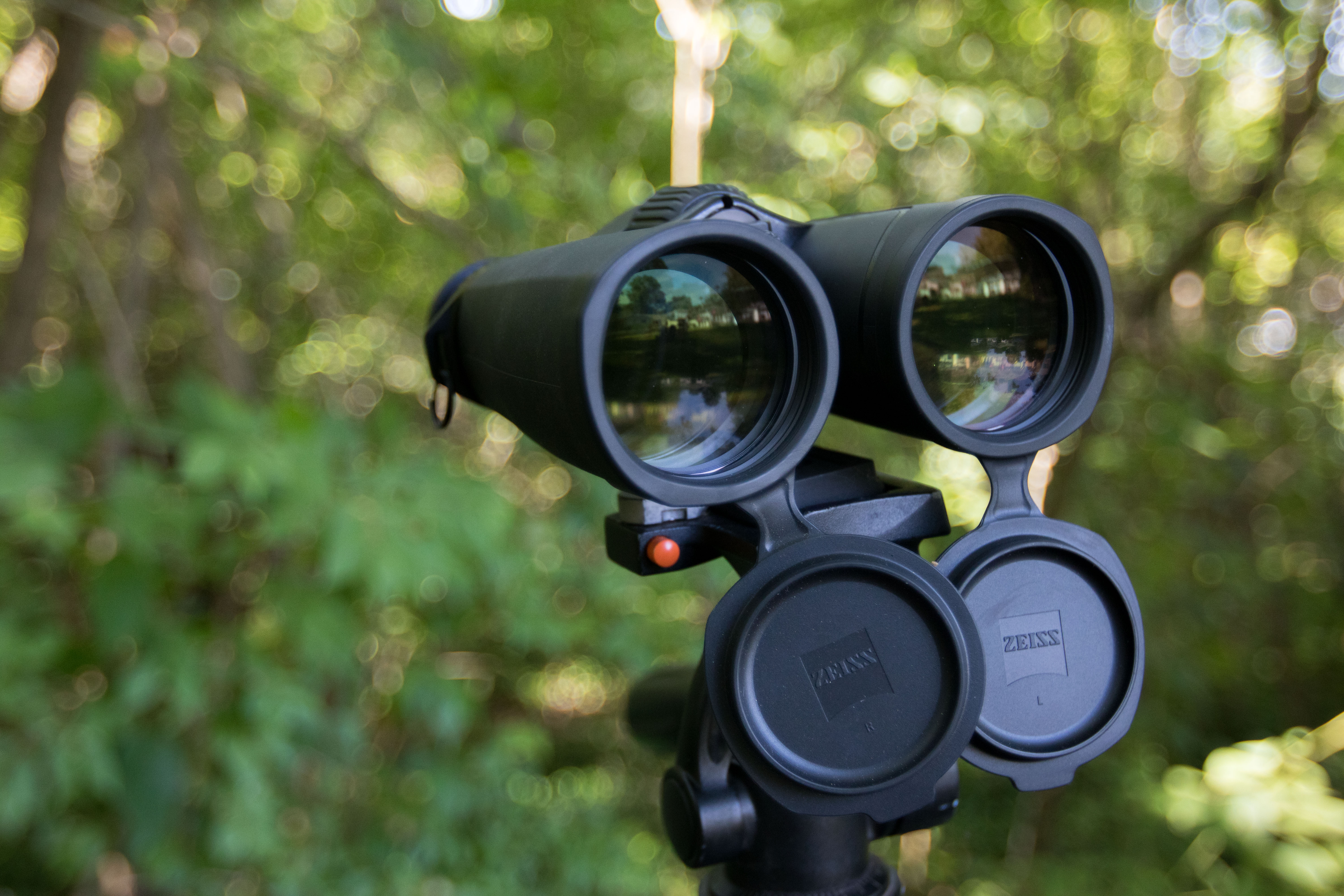
If you’re willing to fork over some serious dough for a set of binoculars and have your eyes set on a 50mm objective lens, I don’t see why you would purchase anything else. ZEISS really knocked this one out of the park.
The ZEISS SFL 10X50 is more compact than most, if not all, other 50mm options, and they have superb optical performance that I would stack against any high-end binocular. Additionally, they offer some of the best performance in terms of specifications compared to anything else.
To top it all off, the price of these German optics is fantastic compared to Swarovski’s, made in the neighboring country of Austria. In the world of premium binos, $1,800 is pretty reasonable. The performance and compact benefits you get are well worth the investment in my eyes.
Heck, even if you weren’t necessarily looking at 50mm options, these should make you rethink that decision. They’ve taken over the spot in my hunting binocular harness due to the gains I get in low light, and the lack of sacrifice I make in weight. They’re going to live in there until someone proves to me I should change.
Read the full article here



